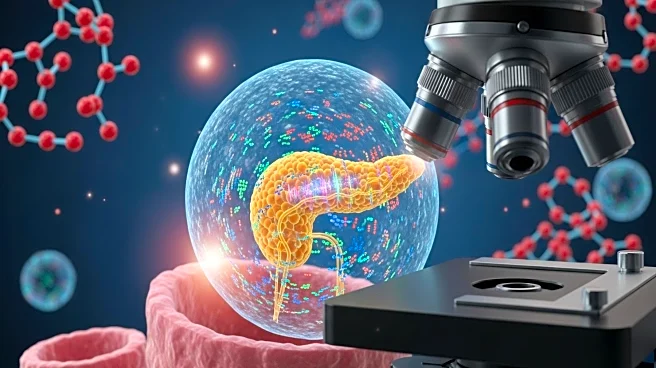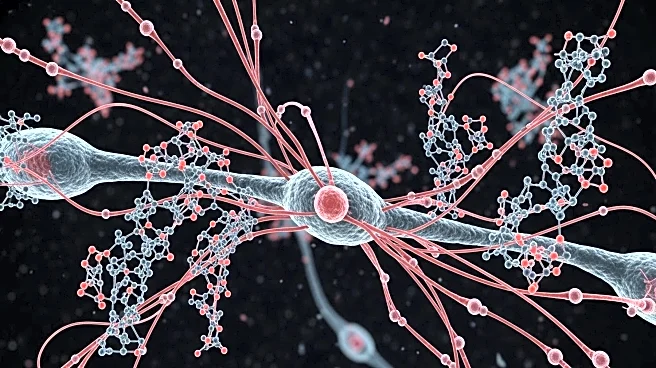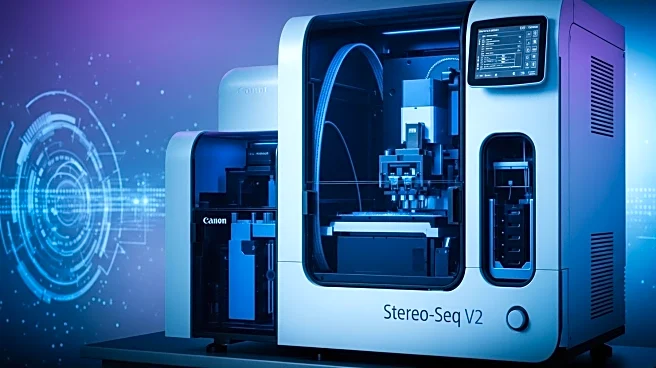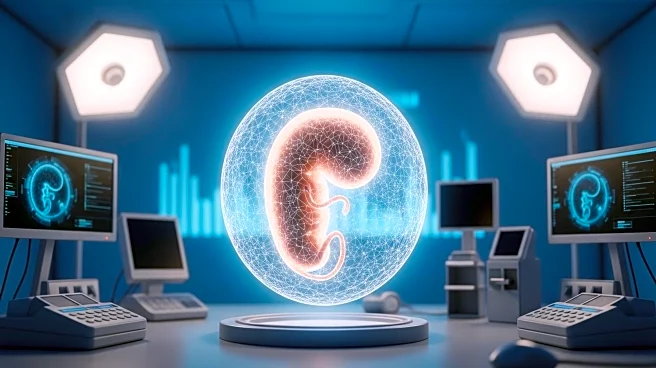What's Happening?
Recent developments in spatial transcriptomics have significantly improved the resolution and scale of studying spatial gene expression in human cells, particularly within the pancreas. These technologies integrate traditional histology with spatial RNA sequencing, allowing for detailed mapping of gene expression within pancreatic islets, which are crucial for glucose homeostasis. The study highlights the use of deep learning models and computational methods, such as the Spatial-eXpression-R (spacexr) library, to enhance analysis by predicting transcript counts and deconvoluting cell types in spots. This approach offers deeper insights into both healthy and type 2 diabetic pancreas biology, addressing previous limitations of low throughput capacity and limited marker numbers in traditional methods.
Why It's Important?
The advancements in spatial transcriptomics are pivotal for understanding the complex biology of the pancreas, particularly in the context of type 2 diabetes (T2D). By providing a more detailed and accurate mapping of gene expression, researchers can better understand the dysregulated hormone secretion in pancreatic islets, a hallmark of T2D. This could lead to improved diagnostic and therapeutic strategies for diabetes, benefiting millions of individuals affected by the disease. Furthermore, the ability to predict differential expression across spatial axes may facilitate the discovery of novel biomarkers and therapeutic targets, potentially transforming diabetes management and treatment.
What's Next?
The study suggests that while the current dataset offers valuable insights, a larger sample size will be necessary to overcome donor-to-donor variation in future analyses. Researchers may combine and meta-analyze these data with future datasets to enhance understanding of transcriptional changes in T2D pancreas. Additionally, the spatial profiles can be used for targeted analyses, including validating the presence or spatial distribution of genes of interest. The continued exploration of spatial patterns across tissues using third-party software and frameworks is expected to yield further insights into pancreas biology and disease mechanisms.
Beyond the Headlines
The integration of spatial transcriptomics with deep learning models represents a significant shift in biological research, offering a more nuanced understanding of cellular environments. This approach not only enhances the resolution of gene expression studies but also opens new avenues for exploring unannotated and non-coding transcripts, which are often overlooked in traditional assays. The ethical implications of these advancements include the potential for personalized medicine, where treatments are tailored based on individual genetic profiles, raising questions about data privacy and access.











